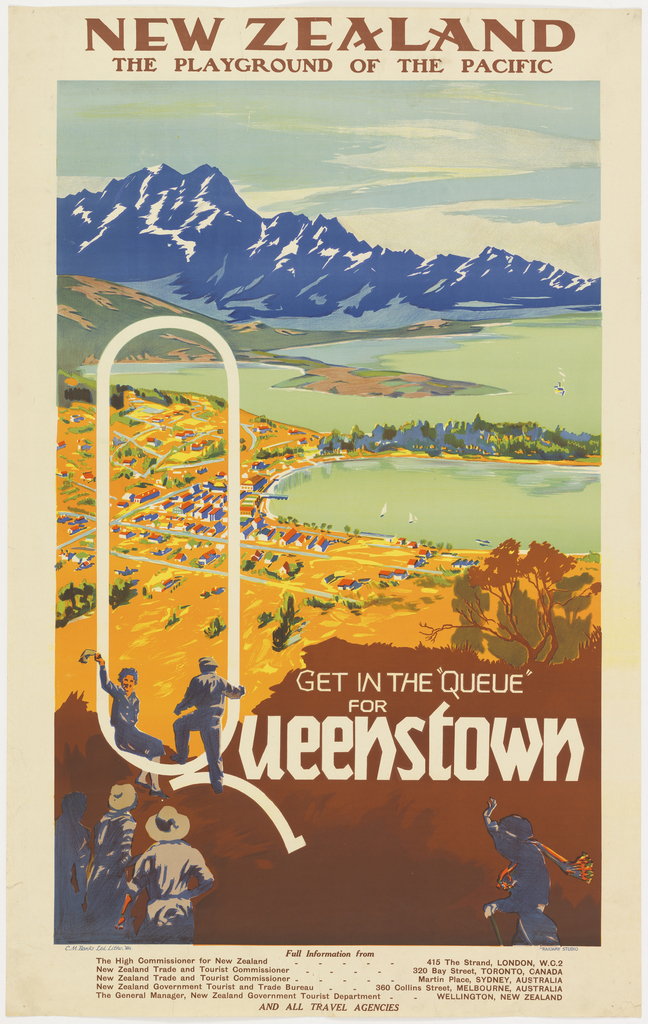In recent decades, New Zealand and Middle-Earth have become almost inseparable in the popular imagination as Peter Jackson’s The Lord of the Rings and The Hobbit movie trilogies, based on J.R.R. Tolkien’s epic novels, have put the isolated country on the world stage. But while the stories of Middle-Earth may be fantasy, the landscapes certainly are not. A breathtaking paradise located at one of the most far-flung corners of the globe, New Zealand’s spectacular nature has always been its greatest selling point, as this 1930s government poster produced by the Railways Studio attests. Hikers – or trampers as we call them in New Zealand – perch and climb on a stylized ‘Q’ looking out to Queenstown, Lake Wakatipu, and the snowy crevices of The Remarkables mountain range. The detail is such that the TSS Earnslaw – a 1912 steamer still active today – can be seen plying the lake’s clear waters.
During the interwar period, New Zealand government tourism promoters employed eye-catching posters to encourage locals and foreigners to travel the country, see its landscapes, and participate in outdoor activities. And with such natural beauty to work with, poster artists presented New Zealand as they saw it. They did not draw on overly artistic or deceptive interpretations and, unlike many tourist destinations at the time, did not aim to attract only wealthy travelers. Rather, they depicted a rugged, outdoor utopia for the adventurous at heart.1
New Zealand has always held the allure of being an unrivalled scenic wonderland. For The Lord of the Rings, Peter Jackson chose the shores of Lake Wakatipu, featured in this poster, to depict the woods of Lothlórien – described by the Elfin character Legolas as “the fairest of all the dwellings of my people.” As a New Zealander I have to agree – this region is one of the most beautiful in all of New Zealand. Surrounded by towering snow-capped mountains, ancient beech forests, and glacial fed rivers, Queenstown is unquestionably worth queuing for.
- Peter Alsop, Dave Bamford, and Gary Stewart. Selling the Dream: The Art of Early New Zealand Tourism. Fwd. by Fran Walsh. New Zealand: Craig Potton Publishing, 2012.
Rebecca Gross is a design historian and freelance researcher and writer. She has a Masters in the History of Decorative Arts and Design from Parsons The New School for Design / Cooper Hewitt, Smithsonian Design Museum, New York.
